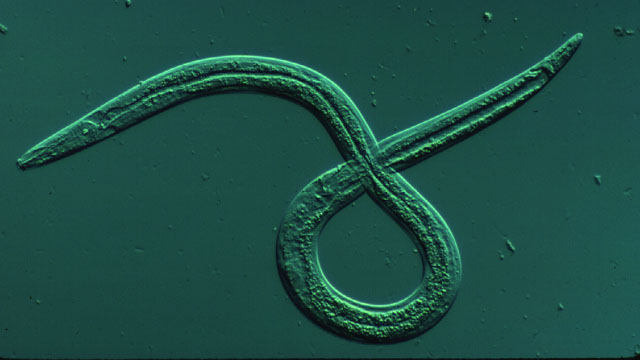 ansmission) or when the female beetles lay eggs (oviposition) in freshly cut timber or dying trees (secondary transmission). Nematodes introduced during primary transmission can reproduce rapidly in the sapwood and a susceptible host can wilt and die within weeks of being infested if conditions are favorable to disease development.
ansmission) or when the female beetles lay eggs (oviposition) in freshly cut timber or dying trees (secondary transmission). Nematodes introduced during primary transmission can reproduce rapidly in the sapwood and a susceptible host can wilt and die within weeks of being infested if conditions are favorable to disease development. If you are still with me, this life cycle means that susceptible pine species are in trouble from landscaping and gardening choices, pallet manufacturing, forest product transportation and even mulches from the wrong side of the track. Just to be  clear, the United States Department of Agriculture says that “… the pinewood nematode has been found in shipments of conifer wood chips, in unseasoned lumber, and in packing case wood. The Monochamus spp. vectors of the nematode have been found in wood pallets, crates, and dunnage. Because of the close relationship between the nematode and its vector, shipments from areas where the nematode occurs can be assumed to be at risk of also carrying the nematode and/or its vector.”
clear, the United States Department of Agriculture says that “… the pinewood nematode has been found in shipments of conifer wood chips, in unseasoned lumber, and in packing case wood. The Monochamus spp. vectors of the nematode have been found in wood pallets, crates, and dunnage. Because of the close relationship between the nematode and its vector, shipments from areas where the nematode occurs can be assumed to be at risk of also carrying the nematode and/or its vector.”
 clear, the United States Department of Agriculture says that “… the pinewood nematode has been found in shipments of conifer wood chips, in unseasoned lumber, and in packing case wood. The Monochamus spp. vectors of the nematode have been found in wood pallets, crates, and dunnage. Because of the close relationship between the nematode and its vector, shipments from areas where the nematode occurs can be assumed to be at risk of also carrying the nematode and/or its vector.”
clear, the United States Department of Agriculture says that “… the pinewood nematode has been found in shipments of conifer wood chips, in unseasoned lumber, and in packing case wood. The Monochamus spp. vectors of the nematode have been found in wood pallets, crates, and dunnage. Because of the close relationship between the nematode and its vector, shipments from areas where the nematode occurs can be assumed to be at risk of also carrying the nematode and/or its vector.” The USDA reports that “(m)anagement of pine wilt disease is primarily limited to prevention. There are no cures for pine wilt disease once a susceptible tree becomes infested with the pinewood nematode. The most effective prevention strategy is to avoid planting non-native pines, such as Scotch and Austrian pine, where the mean summer temperature is greater than 20°C. Where these non-native pines already exist, landowners can reduce susceptibility of high-value landscape trees by watering to avoid drought stress. If they discover infestations, landowners can consider removing and chipping infested trees to limit the spread to nearby susceptible trees.” [1]
While this is bad for ornamental horticulture in the United States and Canada, it is very bad for native species in Asia. There in China, Japan and Korea as well as eastern Russia, their invasive is our native, as every invasive species is native somewhere, the earth being a finite closed system.
[1] Michelle Cram, Plant Pathologist, USDA Forest Service Southern Region, Forest Health Protection. And Jim Hanson, Forest Entomologist, USDA Forest Service Northeastern Area State & Private Forestry, Forest Health Protection.
No comments:
Post a Comment